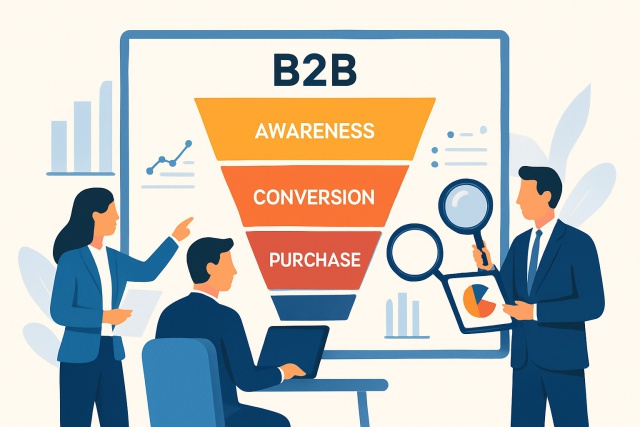Digital Marketing for Financial Services Companies


Financial services marketing has become absolutely essential for companies in this sector looking to reach today’s tech-savvy consumers. This field tends to face its own set of tricky challenges, like navigating tight regulations and the ever-important task of building extra trust.
Financial Services Marketing Where Numbers Meet Nuance
Financial services marketing is all about promoting products like banking, insurance, investments and lending. Given tight regulations and the vital need to earn customer trust, marketers have to walk a fine line playing by the rules while still connecting with customers in a fiercely competitive market.
- It’s more of a marathon than a sprint.
- Marketing content has to toe the line with SEC rules, GDPR and various guidelines from financial conduct authorities.
- Customers usually expect crystal-clear info on financial risks and benefits plus transparency and security to sleep well at night.
- The market is fiercely competitive with traditional banks, fintech startups and digital challengers all elbowing for a piece of the pie.
- Market segmentation here can get pretty intricate. It weaves together demographic, psychographic and behavioral factors unique to the financial world.
Key Elements of a Digital Marketing Strategy for Financial Services That Actually Work (Yes, They Do)
A strong digital marketing strategy for financial services weaves together brand positioning and customer acquisition, retention, compliance and performance measurement like the threads of a well-crafted tapestry.
- Brand positioning and messaging highlight reliability and expertise and resonate with your audience on a genuinely reassuring level.
- Website and user experience thoughtfully crafted to inspire trust, guarantee security and keep navigation so straightforward even a first-timer would feel right at home.
- Content marketing designed to educate and inform potential customers about financial products cutting through the jargon to make things clear as day.
- SEO carefully tailored to competitive financial keywords and keeping a close eye on industry standards to stay on the right side of the rules.
- Paid digital advertising including PPC and retargeting meticulously executed with regulatory requirements in mind—no cutting corners here.
- Email marketing and automation focused on personalized communication that gently nurtures leads without feeling pushy or robotic.
- Social media strategies crafted to responsibly build brand awareness and genuinely engage clients because nobody likes a shouty brand.
- Analytics and reporting put to work measuring campaign performance and fueling ongoing improvements turning data into actionable insights with a bit of finesse.
Creating a Website That Is Both Compliant and Engaging Because Let’s Be Honest, Nobody Likes Boring or Risky
Your website is the cornerstone of your digital marketing game plan. It must meet client expectations for security and transparency and offer clear calls-to-action and a smooth user experience. Mobile optimization is a must these days. Proper regulatory disclosures go a long way in building trust.
- Set up secure site protocols like SSL certificates to keep user data safe.
- Make sure regulatory disclosures and disclaimers are clear and easy to spot—no one likes hunting for the fine print.
- Create navigation so intuitive visitors can find the financial info they need in a snap.
- Use lead capture forms that are straightforward and compliant and gently encourage users to get in touch without feeling like a chore.
- Ensure the site meets accessibility standards and is welcoming for everyone including those with disabilities.
- Integrate CRM and analytics tools to monitor user interactions and tailor the experience with a personal touch.
Approaches to Content Marketing in Financial Services
Diving into content marketing within the financial sector is not just about crunching numbers and playing it safe. It’s a bit like walking a tightrope balancing trust and engagement without tipping into jargon overload. From what I’ve seen, nailing this means mixing solid expertise with a down-to-earth tone that speaks to real people, not just portfolios. So, let us unpack some smart ways to make content in this space both credible and surprisingly relatable.
Creating meaningful and educational content is key in financial services marketing because it helps build trust and connect with potential clients. The content must meet regulatory requirements, avoid misleading claims, and break down complex financial topics into straightforward bits.
- Share educational blog posts that break down financial concepts and industry trends into clear and easy-to-digest chunks because sometimes clarity is the best gift you can give.
- Create detailed whitepapers and guides that really roll up their sleeves and dive headfirst into the nitty-gritty of important topics.
- Highlight case studies and client testimonials that tell the real stories behind successful outcomes. Nothing beats a good success story to build trust.
- Produce video content and host webinars to connect with your audience in a more visual and interactive way.
- Develop FAQ sections and resource hubs that tackle common financial questions head-on, helping people feel less overwhelmed and more empowered.
- Spread your content far and wide through newsletters, social media and partnerships so it reaches ears beyond the usual crowd.

Example of a compliant, user-friendly financial services website homepage
Best Practices for Search Engine Optimization (SEO) That Actually Work
Optimizing digital assets for search engines in the financial sector can feel like walking a tightrope. It’s about finding the right balance between targeting focused keywords and strictly adhering to compliance rules. Good SEO not only boosts your visibility for relevant searches but also attracts the visitors who matter most and helps build authority while staying fully compliant with regulations.
Kick things off by digging into keywords that show solid intent in the financial world. Long-tail keywords tend to be the hidden gems here. Tools like Moz Pro or Mangools’ KWFinder usually do the trick without much fuss.
Next up, polish your on-page SEO by tweaking metadata, headers and internal links. It’s not just about ticking boxes because your content has to stay spot-on with compliance standards too.
Then focus on snagging authoritative backlinks from respected finance websites. These act like gold stars for your domain authority and can really give you a leg up.
Make your website lightning-fast and super smooth on mobile devices. This not only keeps users happy but search engines notice that kind of TLC and reward it.
Always double-check that everything you publish is accurate and follows the latest regulatory rules. Avoid cutting corners if you want to keep things above board.
Lean into local SEO tactics to zero in on specific branches and regions. It’s a clever way to reel in clients right from your own backyard.
Smart Strategies and Keeping Paid Advertising Above Board
Paid digital advertising in financial services often leans on platforms like Google Ads and social media to spark demand. Advertisers must carefully craft ad copy that ticks all the regulatory boxes, pick targeting options with extra caution and keep a sharp eye on campaigns.
- Mix it up with different ad types like search ads, display banners and retargeting campaigns to cast a wider net and catch more eyeballs.
- Make sure your ad copy plays by the rules to avoid over-the-top claims or leaving out important details; no shortcuts here.
- Nail down sharp targeting and segmentation plans that fit your various financial products and customer groups like a glove.
- Set clear, sensible budgeting and bidding strategies that hit your campaign goals and keep everything compliant.
- Keep a close watch on ad performance and regulatory compliance to steer clear of any pesky risks lurking around the corner.
Making Every Message Count with Email Marketing and Automation in Financial Services
Email still stands tall as one of the best tools to nurture leads in financial services and keep client relationships ticking along nicely. Campaigns have to follow regulations like CAN-SPAM and GDPR while delivering personalized messages through clever automated sequences tailored to customer needs and journey stages.
Create segmented email lists based on permissions so you can reach customers with financial products and interests that really count to them.
Develop email content that’s clear and compliant and speaks directly to your audience to boost engagement.
Set up automated drip campaigns that gently guide prospects step-by-step through the sales journey without heavy-handed pushing.
Keep a close eye on email open rates, click-throughs and conversions to get a solid feel for how your campaigns perform.
Regularly clean and update your email lists to keep deliverability high and stay out of trouble compliance-wise.
Navigating the Digital Wave with a Human Touch in Social Media Marketing for Financial Services
Social media offers financial services companies a powerful tool to genuinely connect with prospects and clients alike. It definitely requires thoughtful content curation and a careful eye on compliance risks—no shortcuts here. Platforms like LinkedIn and Twitter usually do the heavy lifting for professional outreach and shaping a solid brand reputation.
- Pick platforms that really line up with your target financial audience and business goals.
- Map out the kinds of content you will share and how often you will post to educate and genuinely engage your followers without bombarding them.
- Stay on top of social engagement constantly so you can jump in quickly and keep the sentiment on your side.
- Double-check that every post ticks the boxes with industry rules and includes all must-have disclosures.
- Use paid social campaigns with care. When done right they’re great for broadening your reach and bringing in leads without feeling spammy.
Analytics, Reporting, and Optimization Diving Deep to Make Sense of the Numbers
Tracking the right KPIs is like having a trusty compass for financial marketers—it helps them steadily sharpen their game.
| Metric Name | Description | How to Measure | Typical Benchmarks |
|---|---|---|---|
| Conversion Rate | The percentage of visitors who actually follow through on a desired action | Usually tracked through analytics on landing pages, where the magic happens | Often lands somewhere between 2-5% for lead generation campaigns, which might seem small but packs a punch |
| Cost Per Lead (CPL) | The average amount spent to snag a potential client | Calculated by dividing total spend by the number of leads, simple math really | Typically falls between $50 and $200, depending on the product’s appeal |
| Click-Through Rate | The slice of ad impressions that get a click | Measured through ad platform analytics, keeping a close eye on engagement | Generally 1.5-3% on Google Ads, with more targeted ads often scoring higher — it pays to know your crowd |
| Bounce Rate | The percentage of visitors who take one look and then bolt | Tracked with website analytics tools that keep tabs on your audience’s patience | Usually, anything below 40% is a good sign that people are sticking around |
| Email Open Rate | How many recipients actually crack open your emails | Reported by email marketing software that’s like your inbox detective | Often hovers between 15-25% in financial services, which is pretty standard in this field |
| Social Engagement | The tally of likes, comments, and shares a post racks up | Viewed through social media analytics, your window into audience love | Varies widely depending on audience size — the bigger the crowd, the more the action |
Get your tracking tools in place—think Google Analytics and CRM integrations—to collect data from all corners of your channels.
Zero in on KPIs that line up with your campaign goals and make a habit of checking them regularly.
Put your theories to the test with A/B experiments on content, ads and calls-to-action to see what truly clicks.
Dive deep into customer journey data to spot important touchpoints and sharpen your funnels.
Let the insights from your analytics be your compass as you fine-tune and elevate your campaign strategies over time.
Typical Challenges and How to Tackle Them Head-On in Financial Services Marketing
Financial marketing often hits a wall when it comes to regulatory hurdles that can put a damper on creative flair. Building trust is important since we are dealing with sensitive financial data. Toss in data privacy laws and the breakneck speed of tech changes and you’ve got a recipe for extra headaches.
"In the world of financial services marketing, transparency and compliance aren’t just about ticking legal boxes. They’re the cornerstones of trust that customers genuinely lean on, setting the stage for growth that lasts — the kind you don’t see fizzle out overnight." – Industry Marketing Expert
A Clear-Cut Game Plan for Kicking Off Your Digital Marketing Campaign
Kicking off a financial services marketing campaign definitely calls for a rock-solid plan rooted in thorough research and strict compliance. It also requires ongoing tweaking.
Kick things off with solid market research and review those compliance rules carefully because it saves headaches down the road.
Pin down your target audience segments with laser focus and set campaign goals that suit your products and genuinely meet your clients' needs.
Whip up marketing content and creative assets that meet all regulatory requirements while staying true to your brand's unique voice—no cookie-cutter stuff here.
Pick the digital channels that really move the needle for you whether that’s SEO, paid ads, email or your favorite social media hangouts.
Fire up your campaigns and keep a close watch on their performance. Tracking key metrics and playing by the regulatory rulebook is absolutely key.
Make it a habit to regularly analyze the results. Tweak your budget and double down on strategies that truly deliver the growth you want to see.
Unlock Digital Marketing Success with Moz
Struggling to optimize your online presence? Moz is the ultimate Internet Marketing solution, empowering businesses with powerful SEO tools, insightful analytics, and expert guidance. Elevate your digital strategies and outshine the competition.
- Boost organic traffic with data-driven SEO tactics
- Enhance content marketing with expert recommendations
- Gain a competitive edge with comprehensive link analysis








